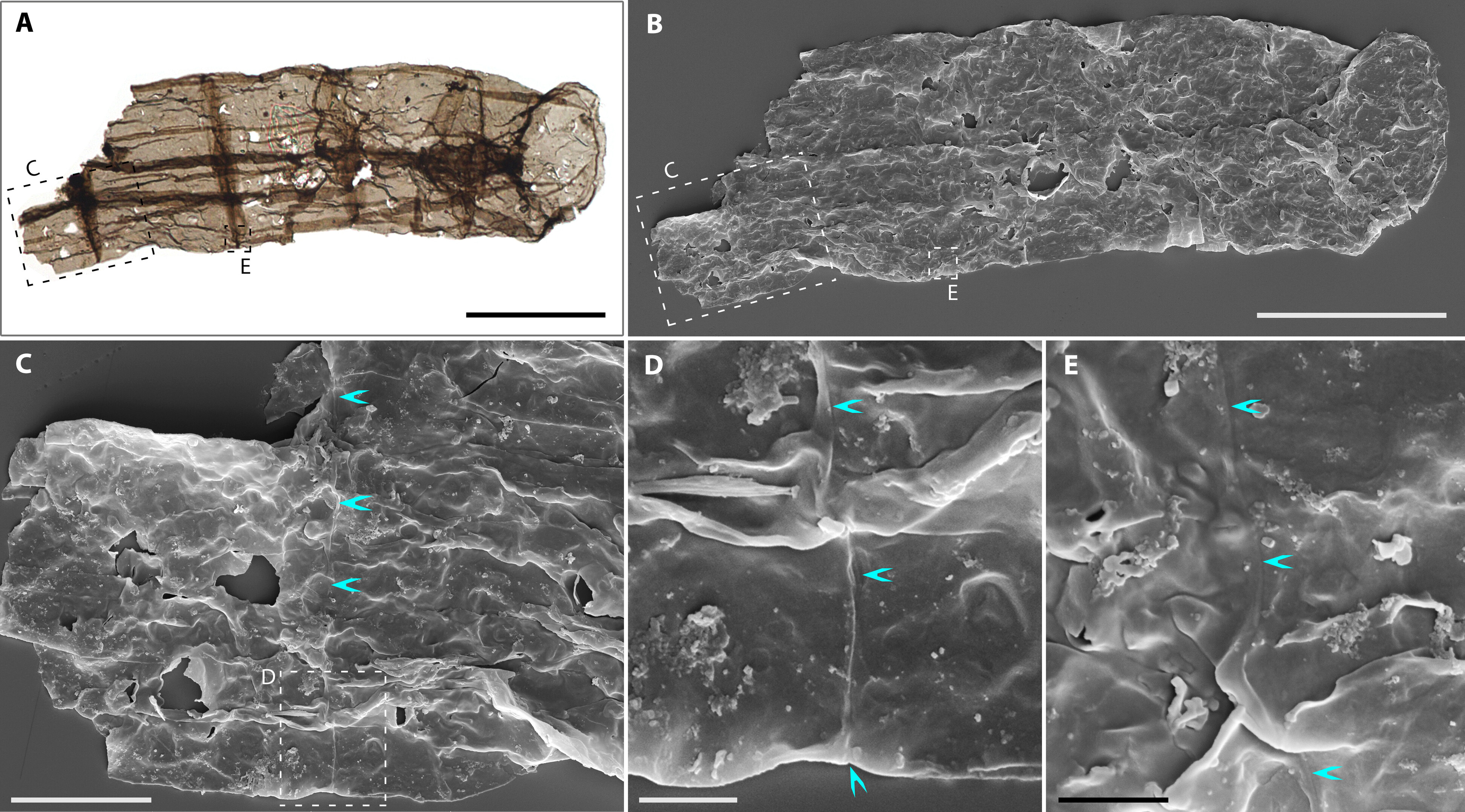1.63-billion-year-old fossil may rewrite the history of multicellular life

- Scientists recently reported the discovery of a 1.63-billion-year-old fossil that rewrites the evolutionary timeline of the Eukarya, which includes all animals, plants, and fungi.
- The ancient organism is making scientists rethink the pace at which multicellularity evolved.
- The discovery contributes to a growing body of work that is challenging other fundamental assumptions about early life on Earth.
The first time Dr. Maoyan Zhu saw the fossil that would change how he thought about early life on Earth, he was visiting his friend, Shixin Zhu, in his home in North China.
“Next to Shixin’s sofa were several beautiful fossils,” Dr. Zhu, a paleobiologist from the Nanjing Institute of Geology and Paleontology, told Big Think. “One was exceptionally large—it reminded me of modern seaweed fossils. When Shixin told me that the rock was 1.56 billion years old, I instantly realized that this was something special.”
Along with a team of researchers, the pair formally analyzed the fossil and published their findings in 2016. They described it as the oldest known multicellular eukaryote, related to all animals, plants, and fungi. Initially, the team did not name the fossil, choosing instead to focus on describing its important physical features rather than its taxonomic relationship with other species.
This chance find would lead Dr. Zhu and his colleagues to a series of discoveries that culminated in this January’s publication of another ground-breaking finding: a 1.63 billion-year-old multicellular eukaryote. The article, published in Science Advances, shows that early life on Earth was far more complex than scientists had thought.
Revising life’s timeline
Biologists group life into two major categories: eukaryotes and prokaryotes. Eukaryotes, which include all animals, plants, and fungi, have cells with DNA enclosed in a nucleus, while prokaryotes have free-floating DNA. Prokaryotes evolved approximately 4 billion years ago. The first single-celled eukaryote joined nearly 2 billion years later.
Prior to the 2016 publication by Dr. Zhu and his colleagues about the large, seaweed-like fossil, the oldest known multicellular eukaryote dated back to 600 million years ago. That means that their 2016 finding of the large, 1.56-billion-year-old fossil, pushed the evolution of multicellularity back by a staggering 1 billion years.
This discovery rippled through the scientific community and motivated Dr. Zhu and his team to keep studying the Yanshan region of North China, where Shixin Zhu had discovered the fossil. This time, the researchers sought out smaller specimens that had more well-preserved cell structures.
Dr. Zhu and another paleobiologist from the Nanjing Institute, Dr. Lanyun Miao, had already been collecting and studying 1.63-billion-year-old shale rocks from the Chuanlinggou Formation in the Yanshan region. Now, they looked at their samples with a renewed interest and perspective, hoping to find more evidence of ancient multicellularity.

Eventually, they found what they were looking for: Within the shale samples were exceptionally well-preserved microfossils of Qingshania magnifica. With modern techniques, the team was able to conclusively demonstrate that these specimens were multicellular eukaryotes.
This discovery further extends the timeline for the evolution of multicellularity by an additional 700 million years and challenges fundamental assumptions about the pace of evolution and what life looked like billions of years ago.
Q. magnifica: the first multicellular organism?
The team of researchers described Q. magnifica as having cylindrical cells joined together with cell walls, like modern plants. Some had spheroid structures in the cells, which suggests that they reproduced with spores. The team hypothesized that Q. magnifica was photosynthetic and, though they can’t prove it, suggested that they might be an extinct group related to today’s modern green algae.
For Dr. Zhu, the most interesting aspect of the finding was that Q. magnifica is not significantly younger than the earliest known single-celled eukaryote. The fact that they co-existed so closely together suggests that multicellularity evolved incredibly early in Eukarya.
“The oldest single-celled eukaryote is around the same age as these multicellular specimens. That’s an interesting finding because it suggests that multicellularity evolved relatively early on in the Eukarya domain. It might make people think differently about whether it’s difficult to evolve multicellularity from a single-celled ancestor.”
Dr. Zhu also noted another potential explanation: Scientists haven’t yet found the oldest single-celled eukaryote.
“There might be a prehistory of eukaryotes still unknown to us, potentially pushing the timeline of Eukarya evolution even further back into the past.”
This underscores the inherent challenges of relying solely on fossil evidence, as numerous factors must converge perfectly for biological material to be preserved over millions of years. “Finding specimens in these ancient layers is particularly difficult, especially before 1.8 billion years ago, when extensive tectonic activity would have made it even more challenging to find those perfect conditions,” Dr. Zhu said.
Revisiting the “Boring Billion”
Dr. Zhu and his team’s discoveries — the large fossil and Q. magnifica — mean that these specimens lived in Earth’s oceans during the “boring billion,” a period between 1.8 billion and 800 million years ago. As the name suggests, this era is characterized by minimal evolutionary and ecological change.
However, Q. magnifica might make scientists rethink this era. As Dr. Zhu puts it, the “Boring Billion might not have been so boring after all.”
“The perceived lack of evolutionary change might have been an issue of preservation — we just don’t have the fossils — not of biology. The truth is, it’s harder to study older samples, and many people assume they won’t find much, anyways. I hope our findings spur the Earth Science community as a whole — paleobiologists, chemists, geologists — to pay more attention to these older rocks and shed more light on what happened in the so-called Boring Billion.”
Still, the first complex multicellular organisms, with more advanced and diverse cells, did not appear for another billion years after Q. magnifica, after the boring billion and close to the well-documented Cambrian explosion around 539 million years ago.
“The step from single-celled eukaryotes to multicellular ones apparently didn’t take as long as we thought,” Dr. Zhu said. “But it makes sense that the evolution of highly complex multicellularity, which would lead to the world we see today, required a much longer timeframe.”
Rediscovering Q. magnifica
As for the name, Qingshania magnifica, Dr. Zhu said that his team was batting around ideas for a name, assuming that they were the first to formally discover the species. That was until they stumbled upon a 1989 paper in an obscure Chinese journal, where they saw sections and an official description that matched their specimen. The authors of this early paper formally named the species “Qingshania magnifica.”
“It shows what new methods and a renewed vision and context can do,” Dr. Zhu said. “There are so many of these lost papers in obscure journals whose significance wasn’t appreciated at the time. In many cases, the early researchers just didn’t have the technology or tools to fully understand what they had found.”





